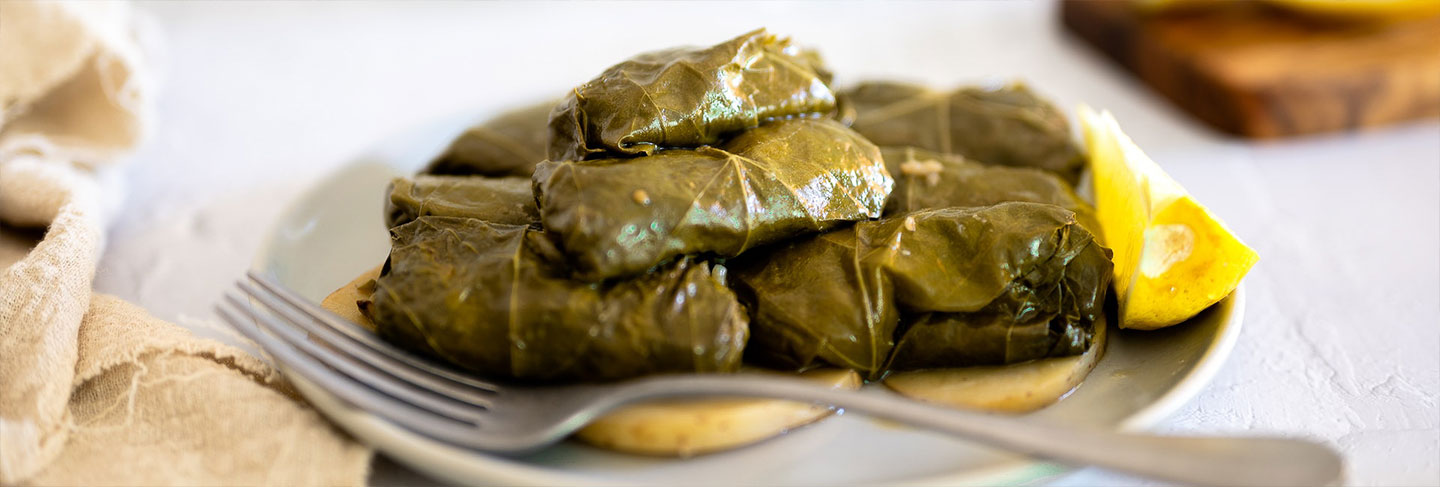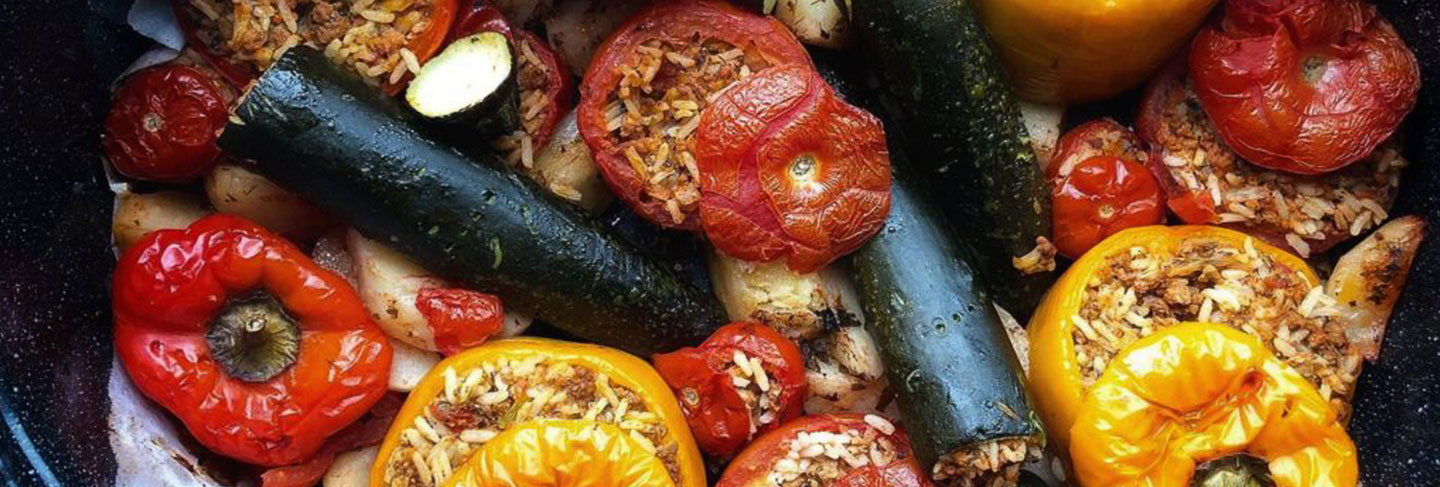When we talk about a trip to Crete, we talk about a real escape. This is also true from a culinary perspective. In contrast to common belief, Cretan gastronomy is not similar to that of Greece, and even Greeks themselves are often surprised by the many uniquely Cretan specialties available. Traditional and rich in flavours, the typical dishes of Crete are a veritable treat for your taste buds. Here are the main Cretan specialties for you to try throughout your stay.
In Crete you will find many olive trees. That's because the island specialises in the production of olive oil, which is one of the only fats used to cook. Olive oil here is of an exceptional quality and available at unbeatable prices. Don’t forget to fill up your suitcases with plenty before leaving, so that your culinary trip to Crete can linger on long after you return home.
Thyme honey from Crete is famous around the world for both its delicious aromatic flavour and its health benefits. Across the island in dry and rocky places, wild thyme is one of the most commonly found herbs, while honey production in Crete dates back to the Minoan civilisation. The honey, which is a staple in Cretan cuisine, is filled with antioxidants and anti-inflammatory properties.
It is not uncommon to start meals with a mezze, that is to say, a selection of appetizers bursting with all kinds of interesting flavours. Mezze is best enjoyed in the many taverns that pepper the island.
Dolmades: A delicious mezze typical of Crete is a serving of ‘dolmades’; grape leaves stuffed with rice, sometimes ground beef too, and fresh herbs, and drizzled in a light lemon dressing.Dakos: The famous ‘dakos’, which are made of Cretan barley rusks called paximadia, and topped with chopped tomatoes, feta or mizithra cheese, succulent Cretan olives, oregano and local olive oil. Though it may sound simple, the authentic fresh ingredients make this one of the tastiest appetisers in all of Crete. For an evening with friends, order a mezze platter over a glass of raki (eau-de-vie) or wine.
Stifado: For those seeking a meaty meal, look on further than stifado, a dish made from veal or rabbit cooked with small white sweet onions in a tomato based sauce. This rich, tender meat stew has a hint of sweetness from the caramelised whole onions and sweet spices blended in the red sauce, lending it a uniquely fascinating flavour.
Gemista: For those seeking a vegetarian option, ‘gemista’ is a traditional dish bursting with fresh flavours and vibrant colours. The dish is prepared by taking tomatoes or other vegetables, then stuffing them with aromatic rice, chopped vegetables and baking it all in a tomato based sauce - delicious!
Xoxlous (snails): On the island, unlike in the rest of Greece, you will find it is common to eat snails – in a special Cretan style. They are prepared in myriad ways: pan fried in Cretan olive oil and garnished with rosemary, cooked with wine, garlic and parsley, stewed…
Paximadi: Though pita bread is more common in all of Greece, Cretans love their paximadia. Cretan paximadi is a local bread product made with barley and some wheat. The traditional bread is double baked and then dried out in the sun for a crispy delicious bread alternative. The origins of paximadi can be traced to ancient times when barley rusks were the staple of farmers, shepherds and Cretan sailors, as their long shelf life meant they would never spoil or rot.
Greece is famous for its feta cheese, however, it is not the only one! In Crete, you will find a number of traditional cheeses that are made locally and are known for their unmistakable flavours.
Cretan Graviera: A cheese made from a blend of sheep’s and goats’ milk, creating a unique, delicious taste. It is considered to be one of the best cheeses in Greece and enjoys great popularity in Greek and Cretan cuisine.
Mizithra: A soft white cheese, again made from sheep’s and goats’ milk, almost exclusively in Rethymno on the island of Crete. The cheese comes in two forms, one with a gentle, sweet flavour and light and creamy texture, which is used in many local dishes, salads, and desserts like kalitsounia. Xynomizithra is a sourer version of the cheese, with a much stronger flavour – it’s something of an acquired taste. It is common for Cretans to enjoy xynomizithra as a mezze with a splash of wine or raki.
Xigalo: A soft, fresh, spreadable cheese with a slightly sour taste, traditionally made in Crete, and more specifically, in the east of Crete.
Saganaki: A delicious warm, fried cheese, with a texture similar to halloumi, which has gained great popularity in all regions of Greece and is commonly eaten as a mezze. The cheeses most commonly used to prepare this mezze are Cretan graviera, kefalograviera, or kefalotyri.
Patoudas: A classic Cretan pastry which combines flaky dough with a sweet nut-based filling, primarily almonds or walnuts and sesame seeds in spices such as cinnamon and nutmeg. Traditionally, they are shaped into a half-moon and then dusted with powdered sugar.
Sfakianopita: the delicious treat looks like a pancake but is actually made of fried dough mixed with sweet mizithra cheese, and then topped with honey, nuts and cinnamon.
Kalitsounia or lyxnarakia: A delicious Cretan delicacy that can be eaten both as a dessert or mezze. These sweet mizithra cheese pastries are sprinkled with cinnamon, and sometimes powdered sugar too if they are eaten as a dessert - extremely soft and highly addictive!
Wine: Crete is an island famous for its vast vineyards. Wine production happens in most parts of Crete, including Daphnes, Archanes, and Peza, and Cretans take pride in producing wines of exquisite quality. According to historical documents, wine from Dafnes, located close to Heraklion, has been drunk in nearby regions since 1271. In the Dafnes regions, one of the most commonly produced wines is a red, made from the signature grape of the region - Liatiko.
Raki: Cretans are known to enjoy a glass of raki after their meal or to greet guests, as a sign of friendship and social interaction. This is in contrast to Greeks from other regions, who tend to drink ouzo. To put it simply - raki is the national drink of the Cretans. The digestive drink is clear in colour, but turns white when you add ice. It is produced in the autumn after the grape harvest, when the vines have been pruned. During the winter, warm raki mixed with honey and spices, called rakomelo, is often enjoyed after a meal, or given to you by your grandmother to cure a cold or sore throat. A deliciously sweet drink that you must try!



